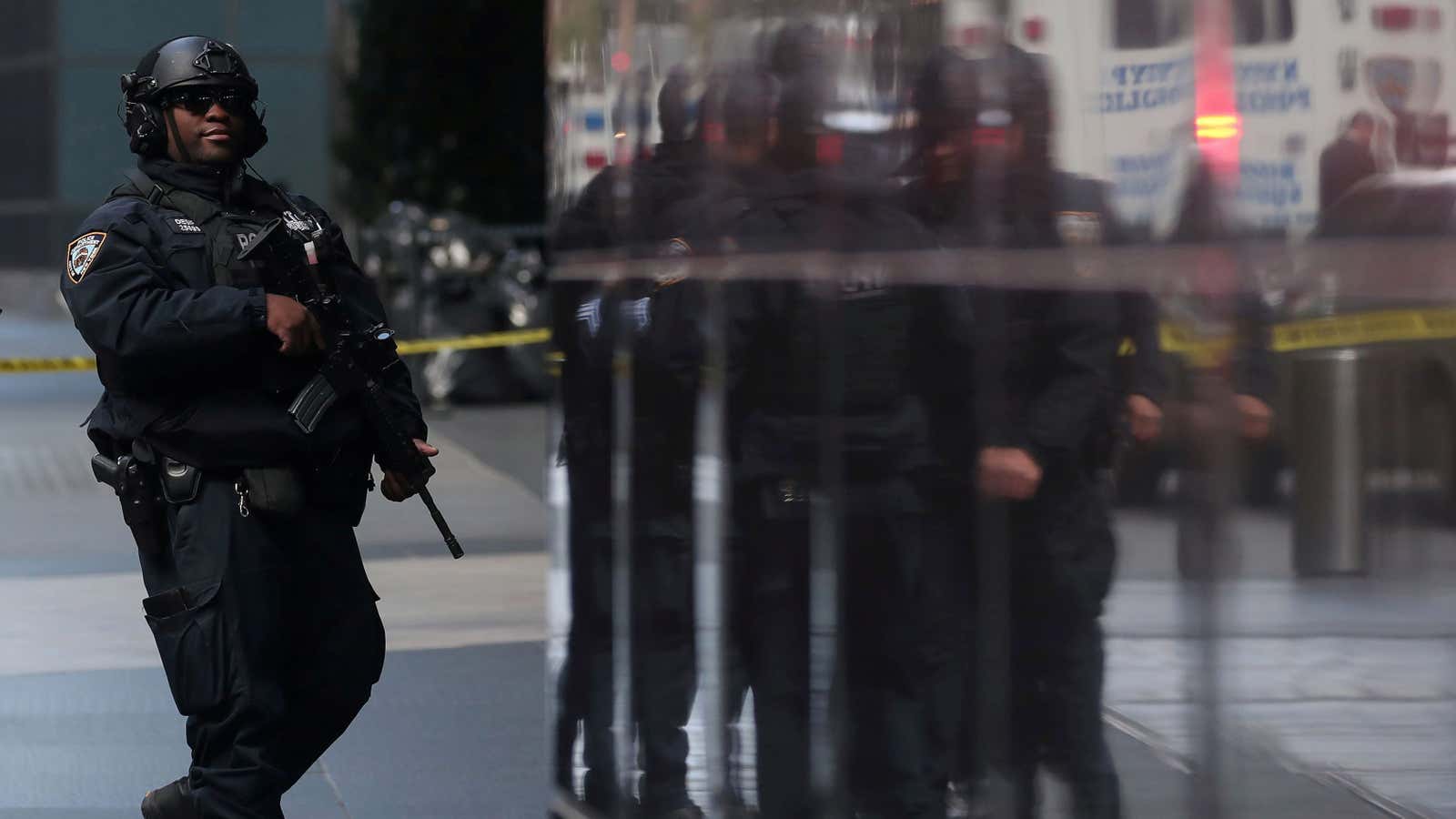The explosive device sent to CNN at its New York headquarters was intercepted in the mailroom of parent company WarnerMedia. Along with government agencies, US corporations have been on high alert since 9/11 and the subsequent scare during which anonymous letters containing anthrax spores were sent to US media organizations and congressional offices.
The CNN device, said to be similar to those addressed to Barack Obama, Hillary Clinton and George Soros, was addressed to former CIA director John Brennan. A WarnerMedia executive told CNN it “appeared to be a pipe bomb.” CNN also quoted a New York City police source who described the device as having been made from a “pipe and wires.” Unlike the packages mailed to the homes of Obama and Clinton, the one delivered to CNN was dropped off by a courier, as might have been the device left in Soros’ home mailbox.
Police removed the bomb, placed it in a “total containment vessel” truck and drove it to a disposal facility in the Bronx.
What makes a package look like trouble?
According to the US Postal Service, signs (pdf) to look out for include any of these indicators:
- An excessive amount of tape used to seal the package
- Oily stains, discolorations, or crystallization on the wrapping
- Strange odors
- The somewhat obvious “protruding wires”
- Misspellings or typos on labels
- No return address
- An inordinate number of stamps used (which may mean it was sent from another country)
- Restrictive markings such as the word “personal” on the front
Private shippers like FedEx and UPS rely on what they describe as a “risk-based strategy,” and “hope to detect illegal or dangerous shipments by spotting something unusual about the package or the shipper,” according to the Associated Press. Neither company would discuss details but said they do cooperate closely with law enforcement.
US government offices are especially vigilant. “At the FBI we had an intake procedure for every package that came in,” former FBI agent Dana Ridenour told Quartz. “They were scanned, they’d go through a metal detector, all before they really got inside.”
The federal warnings to companies
The US Department of Homeland Security tells corporations of all sizes that “mail screening is both an art and science.”
There are “no guarantees that even the best screening technology and procedures will identify all potential threats before a letter or package arrives at the desk of the intended recipient,” says a guide distributed by the agency to the public and private sector.
“Threats in the mail stream are continually changing,” the DHS handbook instructs. “New explosives, new electronic trigger devices, and new biological and chemical substances are appearing at more frequent intervals. Nuclear proliferation is making radioactive materials potentially more available than ever before. Terrorists are hiding explosives in common office supply items and electronic devices, making them increasingly difficult to detect. Loading docks and delivery vehicles often provide easy access to buildings that have high levels of security screening at their lobby entrances.”
Don’t use your cell phone near a suspected device, the FBI warns. Get out of the immediate area, then call 911.
“Package bombs, which include letters, parcels, and anything delivered by postal or courier service, are not a new technique and have been used by terrorists and anarchist groups,” says a bulletin (pdf) from the FBI’s National Explosives Task Force. “Many of these bombs are triggered when victims handle or open the packages, although they can be initiated in other ways.”
Today, the FBI issued a statement warning Americans to be on guard, CNN reported: “It is possible that additional packages were mailed to other locations. [Do] not touch, move or handle any suspicious or unknown packages.”
